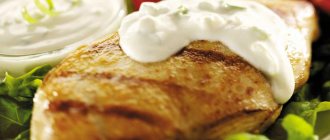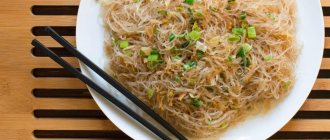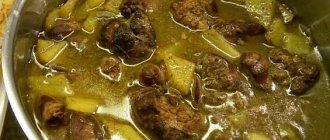Do you like homemade sauces? Freshly prepared, ideal for those dishes that you decide to please yourself, your family or guests? One time-tested recipe is aioli sauce or alioli - the name varies depending on the area. This is a Mediterranean sauce like mayonnaise, only with a lot of fresh, aromatic garlic. You will need few ingredients for cooking, but they must be of high quality. And then the excellent alioli sauce will suit both meat, fish, and potatoes, decorating almost any dish with new shades of taste and giving it an exquisite piquancy.
Origin of the sauce
It is always interesting to find out where this or that dish came from, how it appeared, and who invented it. Some recipes arise as a result of some kind of incident or lack of a required component. Others were the product of the cook's wild imagination. But this is not the case with aioli. Its base is olive oil and garlic. And there are plenty of these products in the Mediterranean region. Therefore, it is not so easy to establish for certain the place and time of origin of the sauce.
Spain and French Provence compete for the right to be considered the birthplace of aioli. Alioli is a combination of the words "garlic" and "olive oil" in Spanish, which evokes the main ingredients of the sauce. In France, a popular dish is Le Grand Aϊoli (Le Grand Aioli) - fresh or salted cod, boiled eggs and boiled vegetables in this same sauce. And the French, who do not want to give up culinary primacy, trace the history of this term to the Old French and Provençal names for garlic and butter. But it is not so important for us to take one side in this dispute, especially since aioli sauce has crossed the borders of both countries and spread throughout the Mediterranean region.
Aioli sauce: recipe and preparation. What to serve with aioli?
Culinary art is unthinkable without sauces. Thick and liquid, sweet and sour and spicy, spicy and fresh - they all add completeness and harmony to the taste of any dish.
Contrary to popular belief, making sauces is not that difficult, especially those that consist of several ingredients. This is exactly what aioli is.
There are, of course, many variations, but first you should try the traditional recipe, which has existed for centuries.
Aioli sauce: composition
The sonorous and beautiful name of the aromatic aioli sauce is translated from French very simply - garlic and olive oil. As a matter of fact, it is named so due to the composition of the ingredients.
It is difficult to say when this recipe appeared, probably from the moment when the inhabitants of the northern part (from Spain to Italy) of the Mediterranean coast began to prepare food. Over time, the original composition underwent changes and innovations were introduced. And it’s not about individual chefs, but about entire regions.
Even within the same country, aioli sauce and its ingredients can vary significantly across different regions.
The traditional version contains only olive oil and garlic. The sauce is prepared as simply, quickly and tasty as possible - this is the whole secret of genius.
In addition, an egg (yolk or white), mustard, lemon juice, pear (in Catalonia), biscuits crumbs and tomatoes (in Malta), etc. are often added to the sauce.
For cooking, use high-quality olive oil; you don’t need much of it per serving, but the difference in taste compared to the cheapest varieties will be very noticeable.
To prepare the aioli sauce, take 120 ml olive oil and 2-3 cloves of garlic. First, grind the garlic and a pinch of salt in a mortar and pestle, then gradually add the oil and grind until smooth and thick. Of course, you can use a blender, but, according to many cooks, this loses the charm of the taste.
Aioli sauce: recipe with egg yolk
For it you will need: 250 ml olive oil, 2 egg yolks, 4 large cloves of garlic, 1 tbsp. a spoonful of lemon juice and salt to taste.
Grind the garlic and salt until smooth. Then add the yolks and lemon juice one at a time. Pour olive oil into the resulting mixture in a thin stream and whisk thoroughly.
Use a mortar and pestle or blender. When the mixture reaches a thick consistency, carefully cover the bowl with cling film and place the sauce in the refrigerator for one hour.
Serve chilled.
Catalan aioli with pear
This version of the sauce is a real discovery. Delicate and refined taste with a light fruity aroma and garlicky spiciness. Pear aioli sauce is the perfect complement to beef steak, pork, poultry and fatty fish. To prepare it you will need: 1 large Conference pear, 1 tsp. sugar, 120 ml olive oil, 2 tbsp. apple cider vinegar, one head of garlic and salt to taste.
Cut the pear into large cubes and blanch in sweet water for several minutes. Lightly peel the head of garlic and cut off the top cap. Then wrap it in foil and bake in the oven for about 20 minutes at 180°C.
Remove the pear pieces, drain, then add the baked garlic cloves and other ingredients. Blend everything thoroughly with a blender until smooth. The key ingredient in the aioli sauce in this case is sweet pear.
As an experiment, you can try replacing it with peaches or quince, for example.
Almond aioli
This is a version of a delicate sauce with a distinct nutty taste. To prepare it, you will need: a small handful of almonds, 120 ml olive oil, 3 cloves of garlic, 2 tbsp. balsamic vinegar, one large chicken egg and a pinch of salt.
The process is elementary simple. The garlic needs to be peeled, and then mixed thoroughly in a blender along with almonds, a pinch of salt and an egg. Then add the vinegar and pour in the olive oil in a thin stream, continuing to whisk the mixture periodically. Use low speed and do this for more time so that the sauce does not separate, but mixes evenly, acquiring a light yellow tint.
What to serve with?
Aioli sauce is perhaps one of the most versatile, basic additions to a main dish. It can be served with the following dishes.
- Vegetables, such as fresh, thinly sliced or julienned, are ideal as a snack. You can also dress salads. And in French Provence, aioli is traditionally served with boiled vegetables, fish and eggs.
- To the seafood. The rich garlic flavor best complements the tender meat. Absolutely anything will do, but French chefs especially recommend it for white sea fish with firm flesh (for example, cod, perch). It should be boiled or stewed. An assortment of seafood with a small bowl of aromatic sauce is also popular, and in Spain they eat paella with it.
- For meat baked in the oven or grilled, along with vegetables.
Be sure to prepare the aioli sauce. You can take the recipe traditionally or with pear, which, by the way, can easily be replaced with quince, with almonds or tomatoes, herbs, red dried pepper, etc. Experiment and find your ideal taste.
Source: https://FB.ru/article/192247/sous-ayoli-retsept-i-prigotovlenie-s-chem-podavat-ayoli
Classic version
The easiest way to prepare alioli is to grind the garlic in a mortar and pestle, adding olive oil drop by drop. The result of the work should be a homogeneous, rich-tasting, thick sauce. This technology is considered classic. A stone or metal mortar is used as utensils. You must prepare for the fact that the manual process of grinding alioli to the required thickness will be quite tedious, long and labor-intensive - this is the only drawback of this method.
This version of the sauce can be served, for example, with toasted bread. This is exactly what they do in the south of Spain, presenting customers in a restaurant with toast with alioli as a first appetizer, which will brighten up the waiting time for the main order.
Classic alioli sauce recipe
Beginning housewives should start their acquaintance with this sauce with the classic recipe. It is easy to implement and will also save time in the kitchen. Yes, and you can make it from products that every housewife probably has in the refrigerator.
As for whipping the sauce, we will outline the most modern and fastest way - whipping with a blender. But those who are more familiar can use a mortar or whisk.
- 120 ml olive oil or sunflower oil.
- 3 cloves of garlic.
- Add salt to taste.
This is how the sauce is prepared:
- It is ideal if you have a mortar and pestle in your kitchen. Since it will be easier to crush the garlic by steaming it with salt. If there is no such device, then crush the garlic with the back of a knife or simply pass it through a garlic press. Even easier - beat in a blender.
- Next, put the garlic in the blender bowl and turn it on. At the same time, begin to introduce a drop of vegetable oil, taking 1 minute breaks between drops.
- As soon as the consistency already resembles mayonnaise, the oil begins to be introduced more generously. And so on until the sauce thickens like mayonnaise and the ingredients run out.
- You can also add garlic or salt to taste.
- After cooking, it’s a good idea to put the alioli in the refrigerator for half an hour.
Garlic mayonnaise
Another way of preparing aioli has become more common in our era of fast rhythms and haste. There have been 2 important changes:
- eggs and salt appeared in the recipe;
- the process is mechanized - we have blenders and food processors at our disposal, which help save a lot of time.
These innovations make aioli sauce similar to our favorite homemade mayonnaise, next to which store-bought mayonnaise cannot be compared. That’s why it’s sometimes called garlic mayonnaise. Such an apt name immediately makes it clear what composition and components you have to deal with. If you don’t have time or good olive oil, you can mix ready-made mayonnaise with a lot of garlic. But it’s better to follow all the nuances of preparation.
With almonds
Delicate sauce with nut filling consists of the following ingredients:
- 120 ml olive or sunflower oil;
- 3 large garlic cloves;
- large chicken egg;
- 2 tablespoons balsamic vinegar;
- a handful of almonds;
- salt to taste.
Cooking steps:
- Garlic is cleaned of all excess. The egg must be washed.
- Combine egg, garlic, nuts and salt in a bowl. Beat with a blender.
- While whipping, add vinegar, and then carefully add oil. As soon as the alioli thickens and turns yellow, it is ready. Although it should be kept in the refrigerator for another 10 minutes.
Aioli with eggs
So, in order to make aioli sauce “in the basic configuration”, we will need:
- garlic – 2–4 cloves;
- olive oil – 200 ml;
- eggs – 1 pc.;
- salt - a pinch.
The sequence of actions is as follows:
- First remove the eggs from the refrigerator so that all components are at room temperature.
- Chop the garlic. Place it in a container suitable for blending products using a blender.
- Beat in a raw egg and add salt.
- Add olive oil. It is best to choose the Extra Virgin variety. But do not “thump” the entire volume at once, but put in literally a drop first. And beat the mixture with a blender. Gradually add the oil in very small portions, continuing to whisk the sauce.
- Thicken the aioli to a creamy consistency, reminiscent of mayonnaise.
Due to the large amount of fat, the sauce can be stored in the refrigerator for at least a week without losing its taste.
How to make aioli sauce
We peel the garlic and pass it through a special press. You can grind it to a homogeneous pulp in any other way convenient for you, for example, grind it in a mortar or beat it in a blender.
Carefully separate the yolks from the whites - we only need the yolks. Add them to the bowl with the chopped garlic. Add salt on the tip of a knife and a little mixture of ground peppers.
Start beating at low speed using a whisk, mixer or blender (with a whisk attachment).
Gradually, literally 1 teaspoon at a time, add vegetable oil (olive or a mixture of olive and sunflower oil), continuing to beat. Under no circumstances pour in all the oil at once! Otherwise, the mixture will not fluff up, but will separate!
The result should be a thick emulsion of a pleasant bright yellow color. Add a little freshly squeezed juice from half a lemon to it - it will slightly whiten the sauce and give it the missing sourness (adjust the amount of juice to your taste). Beat everything for the last time for literally 1-2 minutes so that all the ingredients are combined.
The result will be a thick and smooth sauce. If its consistency seems too thick to you, you can safely dilute it with water (cold, boiled) and stir until smooth.
Aioli sauce is usually served at room temperature, without pre-chilling, that is, immediately after preparation. It will be an excellent addition to fish and seafood, as well as a dressing for salad or cream soup.
The secret of whipping
Despite the apparent simplicity of the recipe, not all housewives are able to accurately calculate the first portions of oil, which, when mixed with an egg, form an emulsion. As in preparing mayonnaise, oil should be added to aioli sauce in microscopic doses, almost drop by drop. Only this technology allows garlic sauce to acquire the desired consistency and flavor bouquet.
However, if the attempt to make aioli was unsuccessful or the description of the process is frightening because it is “convoluted,” you can change the technology a little. To do this, press the egg to the bottom of the glass with a blender and immediately begin to beat, without moving the device to the sides, without allowing a large portion of oil to reach the egg. When you are sure that a light emulsion is formed under the blender impeller, you can carefully move the device throughout the mixture and mix it until the end. That's the secret.
With walnuts
With walnuts the sauce will be a little more tart than with almonds:
- crushed walnuts - 1.5-2 handfuls;
- a bunch of parsley or dill;
- a whole medium-sized head of garlic;
- 30 ml sunflower or olive oil;
- lemon juice - a tablespoon.
- A bunch of selected greens is finely chopped and set aside.
- 3 garlic cloves along with nuts are turned into a paste.
- Add salt and citrus juice to the pulp. Turn on the blender and start blending everything. Then carefully add the oil until the alioli reaches the required consistency.
- Finely chopped greens are added to the finished sauce. Stir and place in the refrigerator for 15 minutes.
Safety
Aioli contains raw eggs that have not been subjected to any heat treatment. How to protect yourself from possible diseases if you are afraid of them?
- Wash eggs thoroughly before breaking their shells.
- To be sure, you can replace chicken eggs with quail eggs (3 pieces instead of 1). They are known to be resistant to salmonellosis pathogens.
These rules are especially important to follow when making aioli, because it refers to cold sauces that do not require heating, baking, or stewing after cooking.
Variations
Aioli sauce is one of those inventions that is difficult to ruin. In different countries and regions, it may include: pear (Catalonia), tomatoes or biscuits crumbs (Malta), lemon juice, mustard, pepper, basil, dill, fennel, roasted almonds. In some cases, only egg whites or yolks are used for the sauce. Add a few tablespoons of fresh, finely chopped herbs, such as parsley or a mixture of several herbs (including arugula, sorrel), to the green aioli.
Serve fresh aioli with vegetables, baked potatoes, shrimp and snails, fish, poultry and pork, bread and soup, accompanied by white or rose wine.
With pear
In Catalonia, it is customary to prepare Spanish alioli sauce (recipe below) with pear. The taste is garlicky and fruity. And it is precisely this contradiction that cannot be overlooked and not tried.
The sauce is suitable for pork steaks and other dishes made from this meat, as well as for pizza and fatty fish.
Pear alioli is prepared from:
- 1 large Conference pear; by the way, it can be replaced with quince or even peach;
- teaspoon sugar;
- a couple of tablespoons of apple vinegar;
- 120 ml olive oil;
- a whole head of garlic;
- salt - added at discretion.
A few steps - and Catalan sauce is on your table:
- The pear is washed and cut into large cubes. Then immerse the fruit in boiling sweetened water for several minutes. In other words, they blanch.
- The pear pieces are taken out of the water and placed in a colander to drain.
- Remove the top husk from the garlic and cut off the top. There is no need to completely clean it. Then the garlic head is wrapped in foil and placed in the oven for 20 minutes at 180 degrees.
- And now the pieces of pear, baked garlic and all other ingredients, except butter, are blended in a blender. And only after that the oil is carefully introduced.











